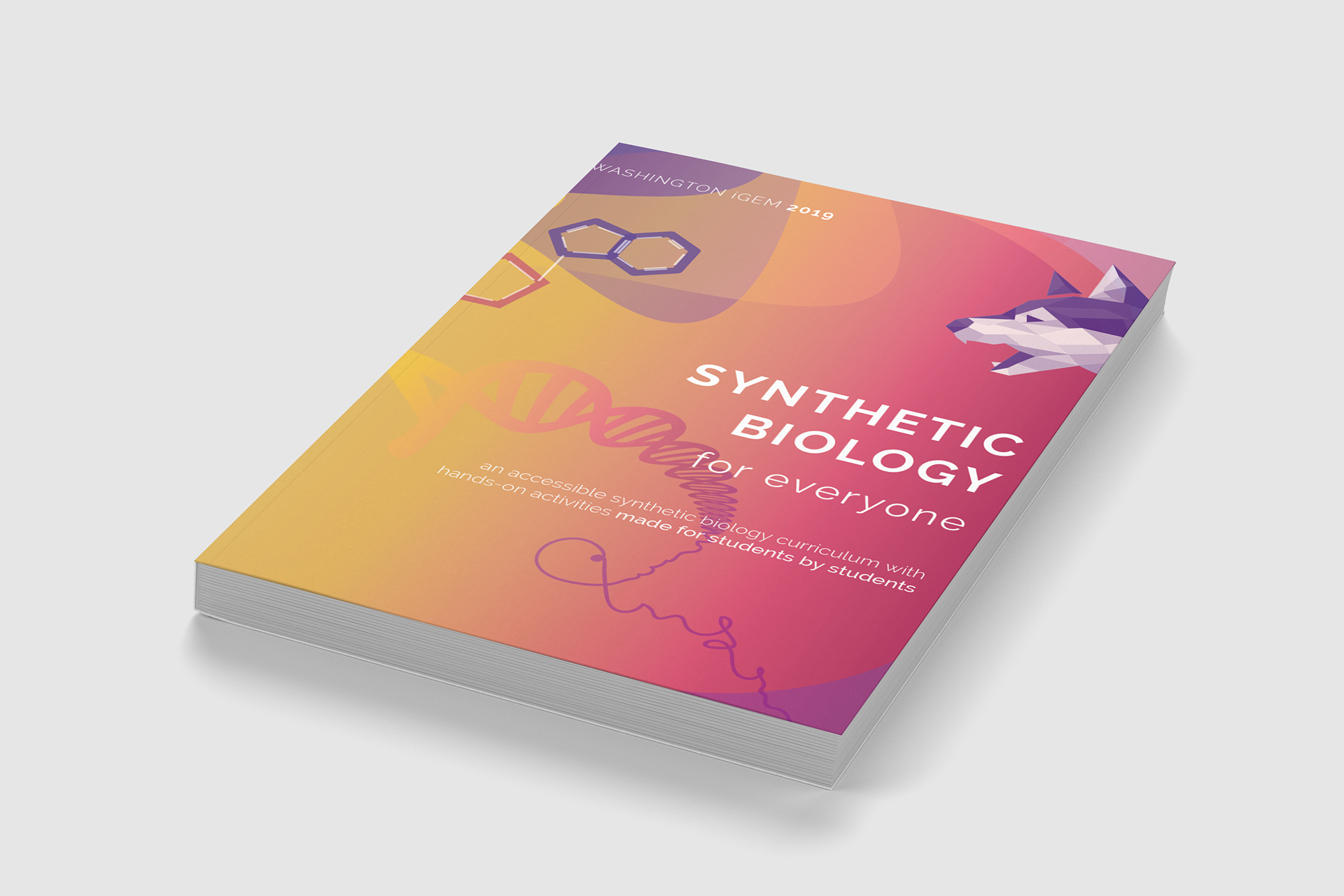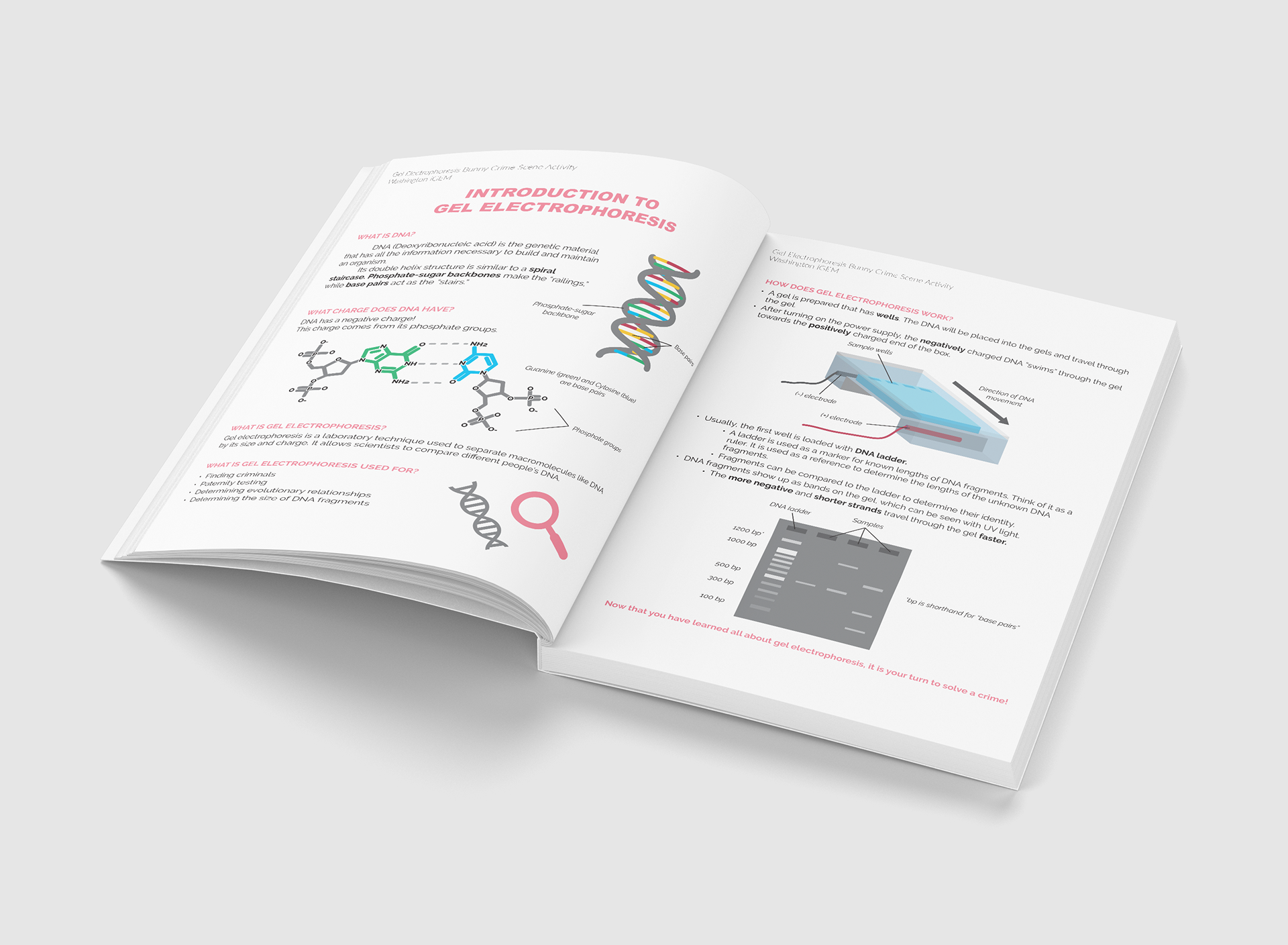University of Washington iGEM Team 2019 - Photo by Elyssa Yim
iGEM (International Genetically Engineered Machine) is an undergraduate synthetic biology team with hopes of winning an annual international competition by doing globally impactful and ethical scientific research. Because synthetic biology is often stigmatized, iGEM seeks to explore how it can be used to better quality of life for people and advance science in a humane way.
As the design lead, I was in charge of managing the design team, which created visual materials to educate others about our team and synthetic biology in general. This was a very stretching and difficult experience, and taught me a lot about how to delegate work to a team.
2019 Project: Creating a Biosensor to Detect Small Molecules
Through chemically-induced dimerization (CID), the UW iGEM team hoped to develop a biosensor for detecting small molecules which would allow people to detect substances and could potentially help to fight infectious diseases like malaria.
How does iGEM work?
The design team created this concept map to help new members comprehend how our team functions as a whole.
PROBLEM
iGEM members don't have a full understanding of how the team works.
As I began to dive into designing for this team, I realized that a fundamental issue was confusion about what the design team was doing in relation to all the other teams. We weren't sure who to communicate with in order to obtain information to include in our visual designs. iGEM is a complex interweb of subteams that are working together to do science research that is relevant to our world today, which makes communication fundamentally important.
RESPONSE
We put together a concept map to explain the team structure.
We set out to talk to other team members to figure out what each team was in charge of doing. I assigned each design team member to a different branch of the team, and together we brainstormed a visual layout for the project.
We learned from this experience that the primary role of the Design team is to visually explain the iGEM project, supporting both Human Practices (which helps to make sure that the project is ethical and appealing to the public) and Web Development (which is in charge of creating the website). We learned that in order to gain deeper understanding of the science itself, we needed to talk to people who are involved with wetlab, which does the actual laboratory work.
Communicating with the Public
I created this video with the help of Chi Truong, in order to explain our project to the public. CID animation by Timothy Chong.
PROBLEM
We needed to explain our project in order to gain support and funding from people who may not understand specific scientific terminology.
RESPONSE
I took charge of creating a fundraising video which would explain both the purpose and significance of the team and our project for 2019. Being newer to the team, it was difficult to assess what would be most important to include, so I spoke to many other members of the team to put together a coherent story that would persuade others to want to donate to our cause.
Project Poster
I was also in charge of putting together the project poster to present our project at the international 2019 Boston Jamboree. The design team and I worked on making the smaller visual explainers throughout the page, as well as creating the overall layout which is based on the small-molecule detection process that our project was focused on.
Poster layout by Angie Dang. Final poster by Clara Too.
Further information about our project can be found on our wiki:
Outreach Materials
Our outreach team won Best Outreach at the 2019 Jamboree. The design team helped with making graphics for flyers, posters, and putting together the outreach activity booklet.



Synthetic Biology Activity Booklet - made for kids, accessible to all. Made with low-income and disabled students in mind, with inexpensive materials allowing kids to experience biology in a hands-on manner. I designed the cover to look both polished and playful.
Jamboree 2019
Our team at in Boston at the Jamboree, displaying our awards! We won Silver, as usual. Glow-in-the-dark shirts by Clara Too.
LEARNINGS
As a non-scientist, oftentimes I felt completely out of my depth in iGEM, especially at team meetings where everyone else was a biochemistry major. However, I realized that my lack of expertise could be a strength as a designer, as I learned to cut through the jargon and explain scientific concepts in a more accessible manner. I also learned to be patient with making changes again and again, as many team members requested changes to the designs continually.
I struggled with impostor syndrome as I led our design team meetings, and often felt like I didn't know what I was doing. But eventually I learned that I could delegate work and rely on my team, and their knowledge could supplement my own knowledge gaps. Overall, this was a very unique design experience that taught me how to work with people in a completely different field, and how to manage a design team in a context with real-life needs and constraints.




